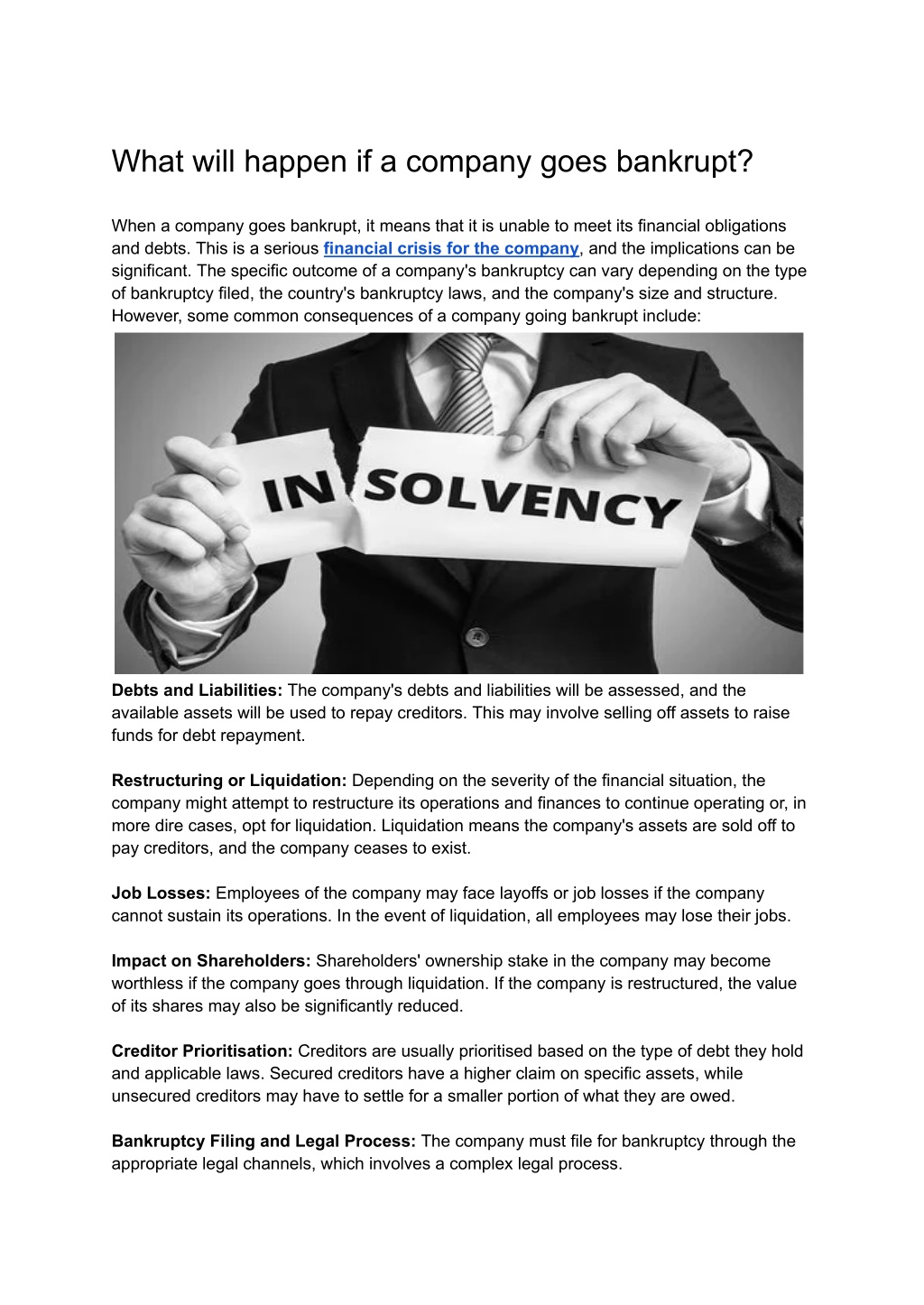Debunking Company Administration in the UK: Results on Employees Throughout Liquidation
Debunking Company Administration in the UK: Results on Employees Throughout Liquidation
Blog Article
The Refine and Effects of a Business Entering Management
As a firm deals with monetary distress, the decision to get in administration marks a vital juncture that can have far-reaching effects for all included parties. The procedure of going into administration is detailed, entailing a series of actions that intend to navigate the firm towards potential healing or, in some situations, liquidation. Understanding the functions and responsibilities of a manager, the effect on various stakeholders, and the lawful obligations that enter play is vital in comprehending the gravity of this circumstance. The consequences of such an action ripple past the company itself, forming its future trajectory and influencing the wider business landscape.
Introduction of Firm Administration Process
In the world of company restructuring, an important first action is gaining a detailed understanding of the detailed company administration procedure. Firm administration refers to the formal insolvency treatment that intends to rescue an economically troubled firm or attain a better outcome for the business's lenders than would certainly be possible in a liquidation scenario. This process includes the visit of a manager, that takes control of the firm from its supervisors to analyze the financial situation and identify the ideal training course of activity.
Throughout administration, the company is given defense from lawful activity by its financial institutions, offering a halt duration to develop a restructuring strategy. The manager functions with the firm's management, creditors, and various other stakeholders to devise a strategy that may entail marketing the organization as a going problem, getting to a firm volunteer plan (CVA) with creditors, or ultimately placing the firm right into liquidation if rescue efforts show futile. The primary objective of business administration is to maximize the go back to financial institutions while either returning the business to solvency or closing it down in an organized fashion.

Functions and Responsibilities of Manager
Playing a critical duty in managing the business's decision-making procedures and financial events, the administrator thinks significant duties during the company restructuring process. The main duty of the manager is to act in the very best rate of interests of the company's lenders, intending to accomplish one of the most beneficial end result possible - into administration. This involves carrying out a thorough evaluation of the firm's financial circumstance, creating a restructuring plan, and executing approaches to make the most of go back to financial institutions
Additionally, the administrator is accountable for communicating with numerous stakeholders, including employees, vendors, and governing bodies, to make certain transparency and compliance throughout the administration process. They need to additionally connect effectively with shareholders, offering routine updates on the business's development and seeking their input when essential.
In addition, the administrator plays an essential role in handling the daily operations of business, making crucial choices to maintain continuity and maintain worth. This includes assessing the viability of various restructuring alternatives, discussing with financial institutions, and inevitably leading the firm in the direction of an effective departure from administration.
Impact on Company Stakeholders
Assuming an important position in supervising the business's economic affairs and decision-making processes, the administrator's actions throughout the company restructuring process have a direct effect on different firm stakeholders. Customers may experience interruptions in services or item schedule throughout the administration process, impacting their depend on and commitment in the direction of the business. In addition, the community where the firm operates might be influenced by potential job losses or changes in the company's operations, influencing regional economic situations.
Lawful Implications and Obligations
Throughout the process of company management, cautious consideration of the lawful ramifications and obligations is extremely important to make sure compliance and protect the passions of all stakeholders included. When a company goes into administration, it causes a set of lawful demands that must be stuck to.
Furthermore, lawful ramifications arise worrying the treatment of staff members. The administrator needs to follow work laws pertaining to redundancies, worker civil liberties, and responsibilities to give needed details to worker reps. Failure to adhere to these legal demands can cause lawsuit against the business or its managers.
Additionally, the business going into administration may have contractual obligations with various events, consisting of landlords, distributors, and consumers. In significance, understanding and meeting legal obligations are crucial facets of navigating a company via the management process. what happens to employees when a company goes into liquidation.
Techniques for Company Healing or Liquidation
In thinking about the future instructions of a business in administration, critical planning for either recuperation or liquidation is important to chart a practical course ahead. When intending for business recovery, crucial strategies might include carrying out a comprehensive evaluation of business operations to recognize inefficiencies, renegotiating agreements or leases to boost cash flow, and implementing cost-cutting procedures to enhance earnings. In addition, seeking brand-new financial investment or financing alternatives, diversifying profits streams, and concentrating on core competencies can all add to an effective recovery plan.

Final Thought
To conclude, the process of a firm going into management involves the visit of a manager, who tackles the responsibilities of handling the firm's affairs. This process can have substantial company administration uk consequences for different stakeholders, consisting of financial institutions, investors, and employees. It is vital for companies to thoroughly consider their choices and approaches for either recovering from financial problems or continuing with liquidation in order to minimize possible legal implications and obligations.
Business administration refers to the official bankruptcy treatment that intends to save a monetarily troubled company or accomplish a much better outcome for the firm's financial institutions than would be possible in a liquidation scenario. The administrator works with the company's management, lenders, and other stakeholders to devise a technique that may include selling the company as a going worry, getting to a business volunteer setup (CVA) with lenders, or eventually positioning the business into liquidation if rescue attempts prove futile. The key objective of firm management is to make best use of the return to financial institutions while either returning the firm to solvency or shutting it down in an organized way.
Assuming a vital position in overseeing the firm's decision-making processes and economic events, the administrator's activities during the company restructuring process have a straight influence on various company stakeholders.In conclusion, the process of a company getting in administration involves the consultation of an administrator, who takes on the duties of handling the firm's events.
Report this page